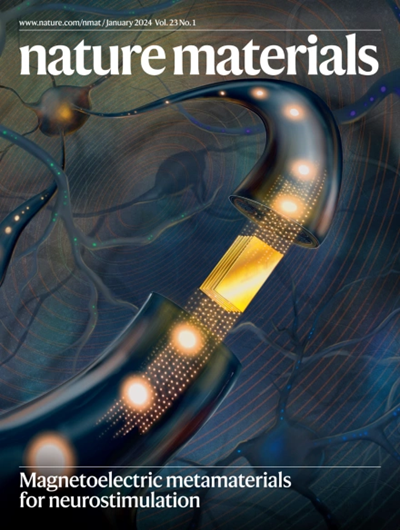Ultrastrong nanotwinned titanium alloys through additive manufacturing
IF 37.2
1区 材料科学
Q1 CHEMISTRY, PHYSICAL
引用次数: 32
Abstract
Titanium alloys, widely used in the aerospace, automotive and energy sectors, require complex casting and thermomechanical processing to achieve the high strengths required for load-bearing applications. Here we reveal that additive manufacturing can exploit thermal cycling and rapid solidification to create ultrastrong and thermally stable titanium alloys, which may be directly implemented in service. As demonstrated in a commercial titanium alloy, after simple post-heat treatment, adequate elongation and tensile strengths over 1,600 MPa are achieved. The excellent properties are attributed to the unusual formation of dense, stable and internally twinned nanoprecipitates, which are rarely observed in traditionally processed titanium alloys. These nanotwinned precipitates are shown to originate from a high density of dislocations with a dominant screw character and formed from the additive manufacturing process. The work here paves the way to fabricate structural materials with unique microstructures and excellent properties for broad applications. Laser additive manufacturing can be exploited to generate unique internally twinned nanoprecipitates in commercial titanium alloys, paving the way to fabricate ultrastrong metallic materials with intricate shapes for broad applications.

通过增材制造实现超强纳米缠绕钛合金
钛合金广泛应用于航空航天、汽车和能源领域,需要复杂的铸造和热机械加工才能达到承重应用所需的高强度。在这里,我们揭示了增材制造可以利用热循环和快速凝固来制造超高强度和热稳定性钛合金,并可直接投入使用。正如一种商用钛合金所展示的那样,经过简单的后热处理,就能获得足够的伸长率和超过 1,600 兆帕的拉伸强度。优异的性能归功于不寻常地形成了致密、稳定和内部孪生的纳米沉淀物,这在传统加工的钛合金中很少见。研究表明,这些纳米孪晶析出物源于高密度的位错,其主要特征是螺纹,由添加制造工艺形成。这项工作为制造具有独特微观结构和优异性能的结构材料铺平了道路,使其得到广泛应用。可以利用激光快速成型技术在商用钛合金中生成独特的内部孪生纳米沉淀物,为制造具有复杂形状的超强金属材料铺平道路,从而实现广泛的应用。
本文章由计算机程序翻译,如有差异,请以英文原文为准。
求助全文
约1分钟内获得全文
求助全文
来源期刊

Nature Materials
工程技术-材料科学:综合
CiteScore
62.20
自引率
0.70%
发文量
221
审稿时长
3.2 months
期刊介绍:
Nature Materials is a monthly multi-disciplinary journal aimed at bringing together cutting-edge research across the entire spectrum of materials science and engineering. It covers all applied and fundamental aspects of the synthesis/processing, structure/composition, properties, and performance of materials. The journal recognizes that materials research has an increasing impact on classical disciplines such as physics, chemistry, and biology.
Additionally, Nature Materials provides a forum for the development of a common identity among materials scientists and encourages interdisciplinary collaboration. It takes an integrated and balanced approach to all areas of materials research, fostering the exchange of ideas between scientists involved in different disciplines.
Nature Materials is an invaluable resource for scientists in academia and industry who are active in discovering and developing materials and materials-related concepts. It offers engaging and informative papers of exceptional significance and quality, with the aim of influencing the development of society in the future.
 求助内容:
求助内容: 应助结果提醒方式:
应助结果提醒方式:


